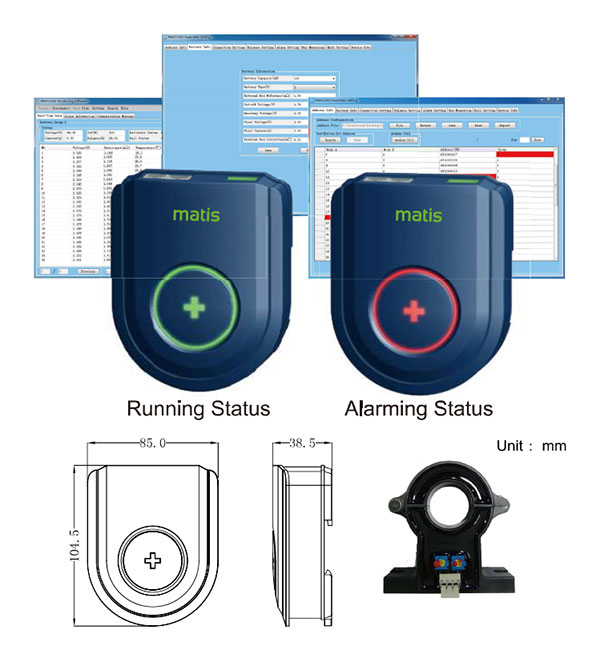What Does a Battery Monitoring System Do?
2023/07/04 丨Technical
A battery monitoring system (BMS) is a device that monitors the state of a battery and is an essential part of a battery-powered system. The main function of the BMS is to prevent over-charging and over-discharging to ensure the battery is operating within a safe operating range and to ensure cell balance. BMS is used in a variety of applications, including electric vehicles, hybrid vehicles, and renewable energy systems. They are also used in industrial applications, such as telecommunications and data centers.
Functions of the Battery Monitoring System
Monitoring Parameters: The main function of the battery monitoring system is to continuously monitor basic battery parameters such as voltage, current, and temperature. These parameters are critical to understanding the battery's health, state of charge, and usable capacity. Monitoring these parameters helps the BMS optimize battery performance, ensuring performance and longevity for future battery usage.
Balance Battery: By measuring voltage and current levels, battery monitoring systems can calculate the battery's state of charge. The BMS can perform active or passive cell balancing to ensure that all cells in the stack have the same state of charge. It can also detect if any batteries are not charging properly, indicating that they need to be replaced.
Optimize Battery Performance: Battery monitoring system is responsible for protecting the battery from potential dangers such as overcharge, over-discharge, overcurrent, and high temperature. These risks lead to shortened battery life, poor performance, and more. The monitoring system uses temperature sensors to measure the temperature of the battery cells and the ambient temperature around the battery. The BMS can adjust charge levels or trigger cooling fans to maintain an optimal temperature range.
Diagnostics and Reports: BMS can diagnose and report errors or potential problems within the battery pack, making it easier for the user or technician to identify and fix problems. A BMS can also store historical data on battery usage, which helps analyze trends, predict battery life, and perform battery maintenance.
Communication: The battery monitoring system communicates with external devices or systems such as chargers, inverters, and vehicle control units. It can detect problems such as battery short circuits, open circuits, or high resistance, and remind the user so that defective batteries can be replaced in time to avoid damage to the entire battery system.
Benefits of BMS
BMS is an important part of any battery-powered system. It secures the safety and reliability of the battery and maximizes its performance.
Improve Battery Safety: BMS protects the battery from damage such as overcharging, undercharging, overheating, and overcurrent.
Extended Battery Life: BMS optimizes battery charging and discharging to extend battery life.
Improve Battery Performance: BMS can optimize battery performance by balancing the battery and managing charging and discharging.
Reduce Maintenance Costs: BMS can help users reduce maintenance costs by preventing battery damage.
Conclusion
Battery monitoring systems play a key role in managing and protecting battery packs in applications ranging from electric vehicles, RVs to renewable energy storage systems. By monitoring battery parameters, the BMS ensures optimal performance, safety, and longevity of battery packs.
- Previous:Without the
- Next:Why You Need a Surge Protector?
- Solutions
- Products & Support
- Cases
- About us
- Contact
TEL:+86 18621879631
Email:timmy@matismart.com
Mobile phone:+86 15801814653
Address:Room 320, No.83, Huanhu West Road 3, Pudong, Shanghai, China, 201306
Wechat:+86-15801814653
Skype:timmybao2008
 沪ICP备09024882号-1
沪ICP备09024882号-1




 CN
CN





 Home
Home

